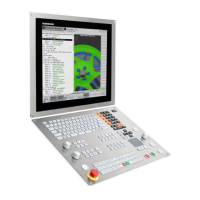15
Machining with five axes
– The TNC 640 permits optimum tool movement
Modern machines often work with four or
five positioning axes. This makes it possible
to machine complex 3-D contours. The
required programs are usually created on
external CAM systems and comprise a
large number of very short line segments
that are transferred to the control. Whether
the workpiece is actually machined
according the program’s instructions
depends essentially on the geometric
behavior of the control. With its optimized
path control, its precalculation of the
contour and its algorithms for jerk
limitation, the TNC 640 has the right
functions for a perfect surface in the
shortest possible machining time. See for
yourself. In the end, it’s the quality of the
workpiece that proves the performance of
the control.
3-D contour machining at its finest
The TNC 640’s short block processing
time of only 0.5 ms for a 3-D line segment
without tool compensation permits high
traversing speeds even on complex
contours. This enables you, for example,
to mill molds or dies approximated with
0.2 mm line segments at feed rates as
high as 24 meters per minute.
The particularly jerk-smoothed path
control when machining 3-D figures and
the defined rounding of series of straight-
line segments provide you with smoother
surfaces as well as high dimensional
accuracy.
The TNC 640 looks ahead and thinks with
you. Its “look-ahead” function anticipates
future changes in direction by adjusting
the traversing speed to the programmed
surface. It also enables the TNC 640—if
desired—to reduce the feed rate when
plunging the tool into the workpiece. This
lets you simply program the maximum
machining speed as the feed rate. The TNC
640 automatically adapts the actual speed
of the workpiece contour to save you
machining time.
For NC programs with normal vectors,
such as those generated by CAM systems,
the TNC 640 automatically calculates a 3-D
tool compensation (optional) for end mills,
ball-nose cutters, or toroid cutters.

